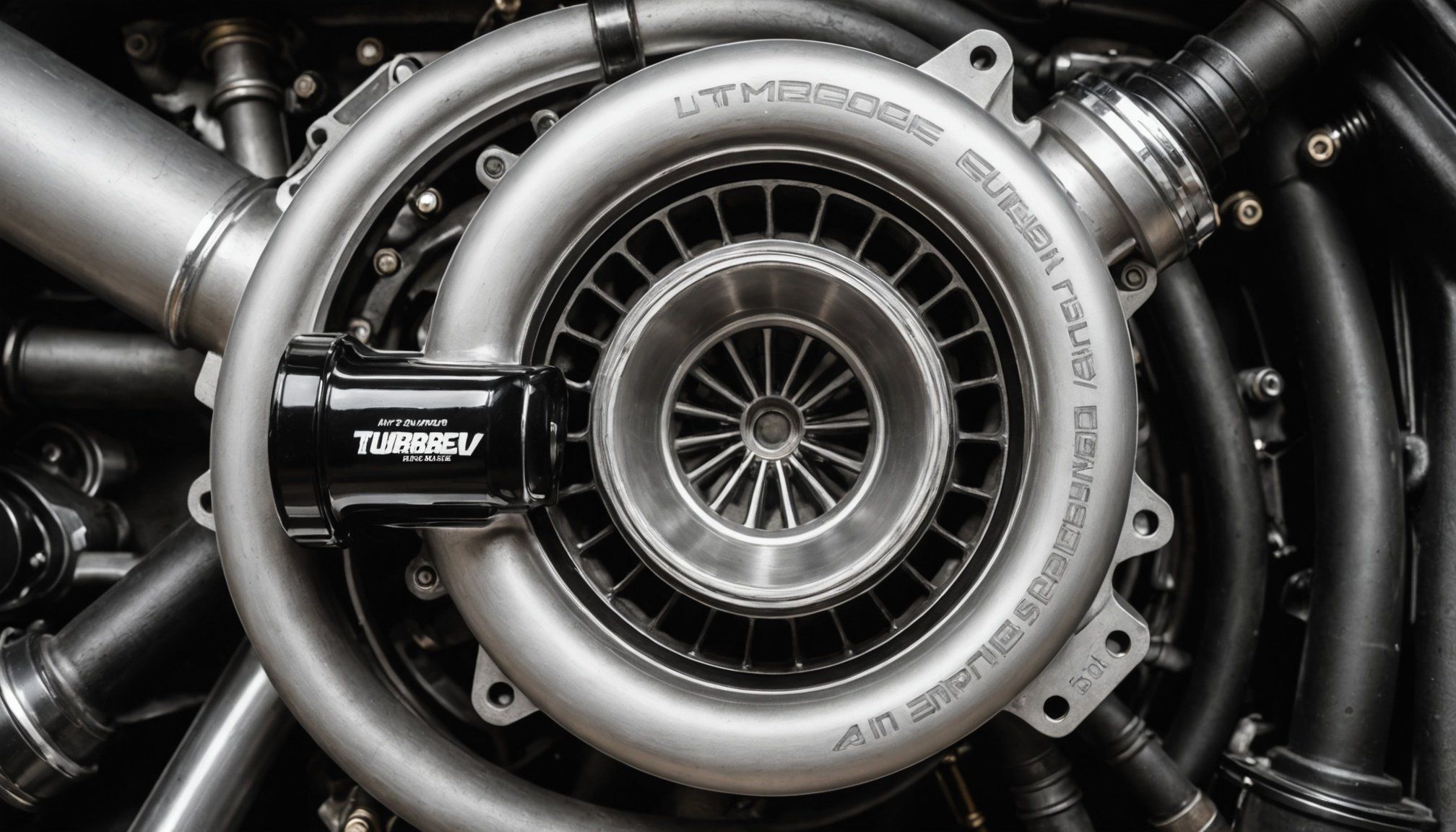Overview of Turbocharging for Mitsubishi Lancer Evo
Turbocharging, a popular method for enhancing the performance of vehicles, is particularly well-suited to the Mitsubishi Lancer Evo. This mechanism involves forcing additional air into the engine’s combustion chamber, significantly increasing its power output. A turbocharger accomplishes this through a turbine driven by the engine’s exhaust gases, which, in turn, drives a compressor that forces the air into the cylinders. Hence, by increasing air intake, it allows the engine to burn more fuel, generating more power without adding much weight.
The benefits of turbocharging are manifold. For the Mitsubishi Lancer Evo, which is already a high-performance car, turbocharging can lead to remarkable gains, improving both speed and efficiency. The increase in power is accompanied by a more responsive acceleration, thus enhancing driving dynamics. Additionally, when adequately tuned, a turbocharged engine can maintain fuel efficiency, a crucial factor for those looking to balance performance with practicality.
In the same genre : The Definitive Handbook for Safely Installing a Rear Seat Entertainment System in Your Lexus LX
Selecting the appropriate turbocharger is critical. Choosing the right size ensures optimal performance, while the wrong choice could lead to inefficiency and increased wear. Understanding these elements is key to maximising the potential of your Mitsubishi Lancer Evo.
Selecting the Right Turbocharger
Choosing the right turbocharger for your Mitsubishi Lancer Evo is crucial for achieving optimal performance tuning. Several factors should be considered, ensuring the selected turbo meets your performance goals without compromising reliability.
Also to read : Enhance Your Ford Edge: How to Upgrade with Adaptive Cruise Control for a Superior Drive
One important factor is the size of the turbocharger. A larger turbo can deliver higher power but often at the cost of increased turbo lag. Conversely, a smaller turbo provides quicker spool-up times but might not suffice for high-power applications. Thus, balancing between performance demands and driveability is key.
It’s also important to consider the turbo’s compatibility with the Lancer Evo’s engine. The turbo should match the engine’s capacity and intended use—whether it’s for daily driving, racing, or a mix of both. Popular turbocharger brands like Garrett, BorgWarner, and Precision offer models tailored for the Lancer Evo, providing various options based on different performance needs.
Researching user reviews and consulting with experienced professionals can further guide your turbocharger selection process. Well-informed choices ensure that the turbo not only enhances performance but also sustains the engine’s longevity and efficiency.
Installation Guide for Turbochargers
Getting started with turbocharger installation on your Mitsubishi Lancer Evo can seem daunting, but breaking it down into simple steps makes it manageable. First, ensure you have the necessary tools and equipment. A basic toolset including wrenches, a screwdriver set, ratchets, and importantly, a torque wrench, is essential for precise installation. Protective eyewear and gloves are also recommended for safety.
Initiating the process, begin by removing the engine covers and disconnecting the battery to prevent accidental shorts. You’ll need to detach the exhaust manifold and the intake pipes carefully. This step clears the way for the new turbocharger.
As you proceed, one of the common pitfalls is neglecting the oil supply and return lines. Ensure they are properly connected to avoid turbo damage due to inadequate lubrication. Also, double-check that all bolts are torqued to specification to prevent leaks.
Upon fitting the new turbo, reconnect all the components in reverse order. While DIY installation is fulfilling, consulting the official manual for specific torque settings and configurations can save you from future headaches. For additional safety, consider a professional inspection post-installation.
Tuning Your Mitsubishi Lancer Evo After Turbo Installation
Performance tuning is essential after installing a turbocharger on your Mitsubishi Lancer Evo. ECU tuning adjusts the car’s engine control unit to match the new turbo dynamics, improving efficiency and performance. Unquestionably, ECU tuning ensures your Evo achieves its maximum potential.
There are various ECU tuning options. Open-source software provides a flexible approach, allowing enthusiasts to custom-tailor settings. On the other hand, proprietary solutions like Cobb Accessport offer user-friendly interfaces and downloadable maps tailored to specific setups.
Choosing the right tuning software involves considering your performance goals and technical expertise. If you’re not keen on DIY solutions, professional tuning services can tailor the adjustments to your exact needs, ensuring optimal performance and reliability.
Popular recommendations for the Evo include EcuTek, known for its comprehensive support and versatile features. It’s crucial to ensure that post-tuning, the engine behaves as desired under different conditions. This involves diligent monitoring and tweaking of parameters.
Regularly consulting experts or online communities can be invaluable, providing insights and advice to refine tuning settings for specific setups and driving patterns. Engaging in thorough tuning safeguards the longevity and efficiency of your turbocharged Evo.
Maintenance Tips for Turbocharged Lancer Evo
Proper turbocharger maintenance is vital for ensuring the longevity and performance of your turbocharged Mitsubishi Lancer Evo. Routine practices can prevent costly repairs and extend the engine’s life. Regularly checking and replacing the oil and filters is crucial, as clean oil helps in cooling and lubricating the turbocharger, preventing wear.
Frequent cooling system checks are equally important. Coolant level and condition affect the turbocharger’s performance; overheating can lead to serious damage. Inspecting the intercooler for clogs and ensuring air pathways remain unobstructed are additional preventative measures.
Signs of potential issues include unusual noises from the turbo, increased smoke from the exhaust, or a significant drop in power. These indicators necessitate immediate inspection to avoid further damage.
To maintain peak performance care, consider a maintenance schedule that includes:
- Oil changes every 3,000 to 5,000 miles
- Turbo system inspection every 10,000 miles
- Intercooler cleaning every 15,000 miles
Adhering to these recommendations helps the turbo function effectively, ensuring both performance and reliability remain uncompromised. Regular check-ups and proactive care enable your Lancer Evo to achieve optimal performance levels consistently.
Real-World Performance Gains
Experiencing performance gains with a turbocharged Mitsubishi Lancer Evo can be transformative. Users frequently report noticeable improvements in power output and acceleration. Enthusiasts have shared real-world insights, showcasing the tangible benefits of integrating a turbocharger.
Several case studies illustrate substantial enhancements. For example, a stock Lancer Evo, achieving around 300hp, can reach approximately 450hp post-turbo installation. This uptick in horsepower significantly enhances the vehicle’s track capabilities and responsiveness during daily driving. The benefits extend beyond power; many users observe improved efficiency metrics, with particular gains in throttle response and speed.
Comparing stock models to turbocharged Evos, data analysis reveals increased torque and reduced 0-60 mph times. For instance, a stock Evo with a 0-60 mph time of around 5 seconds can see times dropping to about 4 seconds post-upgrade. These figures underscore the significance of turbocharging in transforming the driving experience.
Expectation-wise, users can anticipate up to a 50% increase in power, depending on tune and setup. Turbocharger effects are profound, shifting the Lancer Evo into a higher echelon of performance vehicles, offering exhilarating power balanced with notable efficiency.




